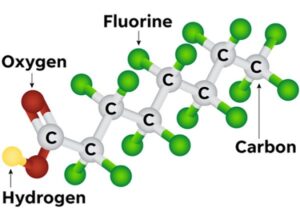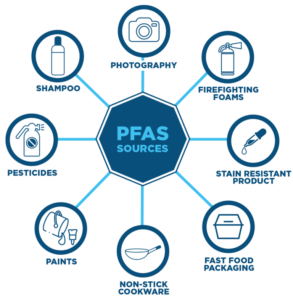 Todays Hours
Todays Hours



All Hours:
- Monday: Closed
- Tuesday: Closed
- Wednesday: 8:00 am - 4:30 pm
- Thursday: 8:00 am - 4:30 pm
- Friday: 8:00 am - 4:30 pm
- Saturday: 8:00 am - 4:30 pm
- Sunday: Closed
Holidays Closed:
- New Years Day
- Martin Luther King Day
- Presidents Day
- Memorial Day
- Juneteenth
- Independence Day
- Labor Day
- Indigenous Peoples Day
- Veterans Day
- Thanksgiving and Day After
- Christmas Eve and Christmas Day

All Hours:
- Monday: Closed
- Tuesday: Closed
- Wednesday: Closed
- Thursday: 8:00 am - 4:30 pm
- Friday: 8:00 am - 4:30 pm
- Saturday: 8:00 am - 4:30 pm
- Sunday: Closed
Holidays Closed:
- New Years Day
- Martin Luther King Day
- Presidents Day
- Memorial Day
- Juneteenth
- Independence Day
- Labor Day
- Indigenous Peoples Day
- Veterans Day
- Thanksgiving and Day After
- Christmas Eve and Christmas Day
Visit Us:
27th Avenue West & the WaterfrontDuluth, MN 55806
Questions?
218-722-3336Email Us
What We Take

All Hours:
- Monday: Closed
- Tuesday: Closed
- Wednesday: 8:00 am - 4:30 pm
- Thursday: 8:00 am - 4:30 pm
- Friday: 8:00 am - 4:30 pm
- Saturday: 8:00 am - 4:30 pm
- Sunday: Closed
Holidays Closed:
- Memorial Day
- Juneteenth
- Independence Day
- Labor Day
- Indigenous Peoples Day
- Veterans Day
Visit Us:
27th Av. West & The WaterfrontDuluth, MN 55806
Questions?
218-722-3336Email Us
What We Take

All Hours:
- Monday: 8:00 am - 4:30 pm
- Tuesday: 8:00 am - 4:30 pm
- Wednesday: 8:00 am - 4:30 pm
- Thursday: 8:00 am - 4:30 pm
- Friday: 8:00 am - 4:30 pm
- Saturday: Closed
- Sunday: Closed
Holidays Closed:
- New Years Day
- Martin Luther King Day
- Presidents Day
- Memorial Day
- Juneteenth
- Independence Day
- Labor Day
- Indigenous Peoples Day
- Veterans Day
- Thanksgiving and Day After
- Christmas Day
“Forever Chemicals”: Per- and Polyfluoroalkyl Substances (PFAS)

Image credit: U.S. EPA
PFAS are a large family of human-made chemicals. The backbone of all PFAS molecules is the carbon (C) and fluorine (F) chain. The C–F bond is very strong, making these molecules nearly unbreakable. PFAS are known as “forever chemicals” because they persist and accumulate over time.
Manufacturers use PFAS to create “slippery” surfaces and products that resist water, heat, and grease. This is why they have been useful in products like non-stick cookware, fire-fighting foam, stain and water repellants, and food packaging. Because of the prolific use of PFAS since the mid-1900s, the chemicals are found essentially everywhere including in the environment and the human body.
While scientists are still learning about the impacts of PFAS on human health, some studies have shown that exposure to PFAS may have adverse health effects. The primary sources of exposure are thought to be food and food packaging, furniture, carpeting, clothing, and drinking water.
How can WLSSD help with PFAS pollution prevention?
WLSSD and other wastewater treatment plants have unique access to a community’s wastewater; this access can provide for some interesting scientific “sleuthing” by testing wastewater components. For example, WLSSD has done some detective work with mercury in wastewater to identify sources and to reduce mercury pollution. WLSSD also collaborated with the U of MN to measure the presence of the coronavirus in our community by monitoring it in wastewater. In the same spirit of scientific investigation, WLSSD will measure PFAS in our community’s wastewater as a way to identify and reduce sources of PFAS through pollution prevention strategies. WLSSD is also committed to providing PFAS education and pollution prevention programming to residents in the communities we serve.

Image Credit: SMCHD.org
What can we all do to reduce PFAS pollution and exposure?
The United States has made progress to reduce manufacturing and distribution of PFAS-containing products, and we can go a step further in limiting our exposure by making informed consumer choices. To reduce exposure to PFAS and prevent pollution in the environment, consider the following action steps:
- Learn more about household products that contain PFAS. Some products to be aware of are non-stick cookware, popcorn in microwavable bags, food containers/packaging, clothing, and carpets. These articles and websites provide more insight:
-
- PFAS ban | Minnesota Pollution Control Agency (state.mn.us)
- Meaningful and Achievable Steps You Can Take to Reduce Your Risk | US EPA
- PFAS-Free Products – PFAS Central
- PFAS: Limiting Children’s Exposure to “Forever Chemicals” – HealthyChildren.org
- Minnesota’s Food and Beverage Packaging Prohibition: Sec. 325F.075 MN Statutes
-
- Research your drinking water sources. The Minnesota Department of Health (MDH) has a goal to test community drinking water sources across the state, but this will likely not include your personal well unless you are in a known area of contamination. You may want to consider testing your well water for PFAS. Certified water filters are available to lower levels of PFAS. For more information, visit the MDH website.
- Stay up-to-date on fish consumption advisories. The Wisconsin Department of Natural Resources (WI DNR) and Department of Health Services (DHS) issued a fish consumption advisory after finding a limited number of smelt near the Apostle Islands that contained PFAS (specifically PFOS). The WI DNR and DHS advisory recommends limiting consumption of smelt to one meal per month. The MDH followed suit and issued an advisory for smelt based on Wisconsin’s findings. A good resource for advisories is “Lake Finder”. Enter in the lake you are interested in and click on “Fish Consumption” from the list on the left. More safe-eating guidelines and information about contaminants are available on the MDH website.
Additional Resources:
Read the complete blog about PFAS on our website: The Fuss about PFAS – WLSSD
A Guide to Reduce PFAS Exposure in the Home – WLSSD
EPA PFAS Roadmap: PFAS Strategic Roadmap: EPA’s Commitments to Action 2021-2024 | US EPA
MPCA PFAS Blueprint: Minnesota’s PFAS Blueprint | Minnesota Pollution Control Agency (state.mn.us)
What is Minnesota doing about PFAS? | Minnesota Pollution Control Agency (state.mn.us)
WI DNR: PFAS | Wisconsin DNR
WI DNR PFAS Fact Sheet: What are PFAS? What is Wisconsin Doing About It? Why Should I Care? (web version)